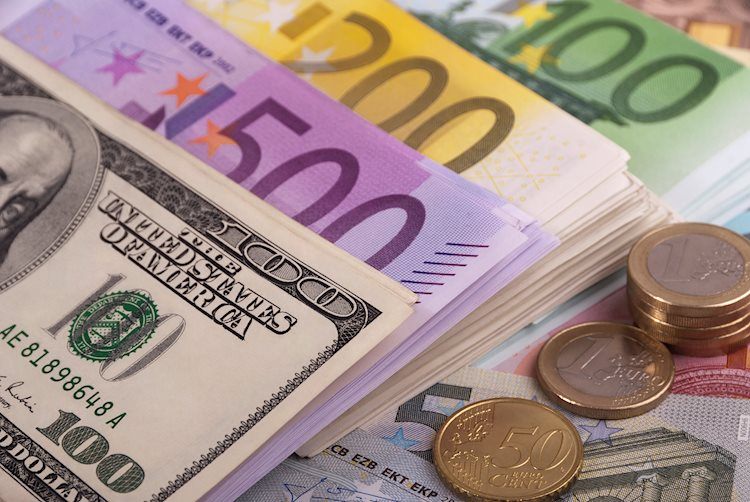- The Euro trades without a clear direction vs. the US Dollar.
- European equities open Friday’s session on the defensive.
- ECB’s Lagarde speaks later in the session.
The Euro (EUR) keeps a tight range against the US Dollar (USD), prompting EUR/USD to gyrate around the 1.0670 region at the end of the week.
On the other hand, the Greenback appears slightly bid and flirts with the key barrier at 106.00 the figure when measured by the USD Index (DXY), as investors continue to digest Chair Jerome Powell’s comments on Thursday, while US yields advance marginally across the curve.
Back to Powell, he confirmed that the Federal Reserve (Fed) is not enthusiastic about raising its benchmark interest rate any further at a time when he pointed out that there is evidence of a gradual reduction in inflationary pressures. He also refrained from ruling out the possibility of another rate hike to help bring inflation closer to the Fed’s target of 2% and expressed doubts about the effectiveness of the current benchmark rate in consistently achieving the goal of 2% inflation.
Later in the session, market participants are expected to closely follow comments from the European Central Bank’s (ECB) President Christine Lagarde in what will be the salient event in the euro area on Friday. Lagarde’s speech will come amidst the recent pick-up in the hawkish narrative from some rate setters, who seem to favour further tightening in light of current upside risks for inflation in the region.
In the US, the advanced print of the Michigan Consumer Sentiment for the month of November will take centre stage, seconded by speeches by Dallas Fed Lorie Logan (voter, hawk) and Atlanta Fed Raphael Bostic (2024 voter, centrist).
Daily digest market movers: Euro remains cautious prior to Lagarde
- The EUR trades below 1.0700 vs. the USD.
- US and German yields advance marginally on Friday.
- Markets anticipate that the Fed will keep its monetary policy in December.
- The ECB appears to be considering a long-term pause until H2 2024.
- Geopolitical tensions in the Middle East remain high.
- The RBA’s SoMP leaves the door open to further tightening.
- UK GDP figures surprised to the upside.
Technical Analysis: Euro remains supported by the 55-day SMA
EUR/USD maintains the cautious trade in the sub-1.0700 region at the end of the week.
If the selling pressure continues, EUR/USD might initially confront the interim 55-day SMA at 1.0642 prior to the weekly low of 1.0495 (October 13), and the 2023 low of 1.0448 (October 15).
On the plus side, the November high of 1.0754 (November 6) stands in the way of the 200-day SMA at 1.0801 and another weekly top of 1.0945 (August 30). The psychological level of 1.1000 is oriented north of here, before to the August peak of 1.1064 (August 10) and the weekly high of 1.1149 (July 27). The surpass of the later could pave the way for a move to the 2023 top of 1.1275 (July 18).
So far, the pair’s outlook remains bearish as long as it trades below the 200-day SMA.
Euro FAQs
The Euro is the currency for the 20 European Union countries that belong to the Eurozone. It is the second most heavily traded currency in the world behind the US Dollar. In 2022, it accounted for 31% of all foreign exchange transactions, with an average daily turnover of over $2.2 trillion a day.
EUR/USD is the most heavily traded currency pair in the world, accounting for an estimated 30% off all transactions, followed by EUR/JPY (4%), EUR/GBP (3%) and EUR/AUD (2%).
The European Central Bank (ECB) in Frankfurt, Germany, is the reserve bank for the Eurozone. The ECB sets interest rates and manages monetary policy.
The ECB’s primary mandate is to maintain price stability, which means either controlling inflation or stimulating growth. Its primary tool is the raising or lowering of interest rates. Relatively high interest rates – or the expectation of higher rates – will usually benefit the Euro and vice versa.
The ECB Governing Council makes monetary policy decisions at meetings held eight times a year. Decisions are made by heads of the Eurozone national banks and six permanent members, including the President of the ECB, Christine Lagarde.
Eurozone inflation data, measured by the Harmonized Index of Consumer Prices (HICP), is an important econometric for the Euro. If inflation rises more than expected, especially if above the ECB’s 2% target, it obliges the ECB to raise interest rates to bring it back under control.
Relatively high interest rates compared to its counterparts will usually benefit the Euro, as it makes the region more attractive as a place for global investors to park their money.
Data releases gauge the health of the economy and can impact on the Euro. Indicators such as GDP, Manufacturing and Services PMIs, employment, and consumer sentiment surveys can all influence the direction of the single currency.
A strong economy is good for the Euro. Not only does it attract more foreign investment but it may encourage the ECB to put up interest rates, which will directly strengthen the Euro. Otherwise, if economic data is weak, the Euro is likely to fall.
Economic data for the four largest economies in the euro area (Germany, France, Italy and Spain) are especially significant, as they account for 75% of the Eurozone’s economy.
Another significant data release for the Euro is the Trade Balance. This indicator measures the difference between what a country earns from its exports and what it spends on imports over a given period.
If a country produces highly sought after exports then its currency will gain in value purely from the extra demand created from foreign buyers seeking to purchase these goods. Therefore, a positive net Trade Balance strengthens a currency and vice versa for a negative balance.
Read the full article here

